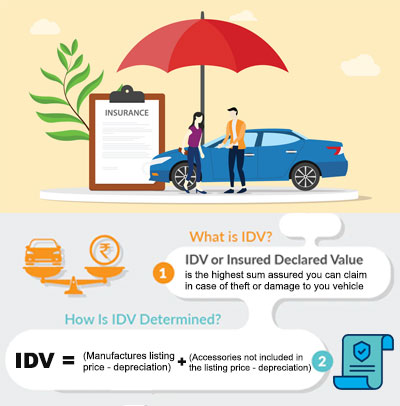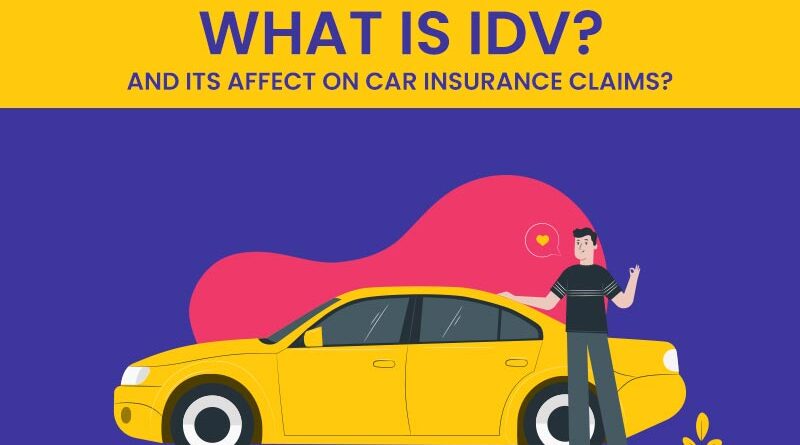What is IDV? How it Decide. All Things You Must Known!
If your car is stolen or completely damaged in an accident, the compensation provided by the insurance company is determined by the Insured Declared Value (IDV) of your vehicle. Learn how IDV is calculated.
When you get comprehensive insurance of your vehicle, you get compensation for the damage caused to the vehicle from the insurance company. If your car is stolen or completely destroyed in an accident, then the amount the insurance company will give you as compensation depends on the IDV of your car. IDV means Insured Declared Value. Actually, while doing comprehensive insurance, the insurance company assesses the current price of your vehicle and records the current price in the form of IDV in the insurance company. If we understand in simple words, the current market value of your vehicle is called IDV. But the question arises that on what basis does any company decide the IDV of the vehicle?

Why There Is Need Of IDV?
IDV serves as a crucial measure to prevent disputes between the insurance company and the customer. When it comes to compensation for theft or damage to the vehicle, the customer typically seeks higher compensation while the company aims to provide less. This can lead to complications. Therefore, IDV is established at the time of insurance, based on the current market value of the vehicle. It already determines the value of the vehicle, ensuring a smooth and dispute-free claim process when the need arises.
What factors determined the Insured Declared Value (IDV) of your vehicle?
- Age of the vehicle: The age of your vehicle is crucial in determining its IDV. Generally, the IDV decreases as the vehicle ages. Newer vehicles typically have a higher IDV compared to older ones. If your vehicle is more than 5 years old then IDV is decided on the basis of its servicing condition and body parts. In most cases, the price of the vehicle is decided with the consent of the insurance company and the customer.
- Manufacturer and model: The make and model of your vehicle significantly impact its IDV. For instance, luxury cars like a Lamborghini Vannon would have a higher IDV than a car like an Aston Martin due to differences in their market values.
- City of registration: The city where your vehicle is registered also plays a role in determining its IDV. Vehicles registered in metro cities tend to have a lower IDV compared to those registered in tier-II cities.
- Standard Depreciation: As per the Indian Motor Tariff, vehicles undergo standard depreciation over time. The IDV is influenced by this depreciation, which increases with each passing year. There’s a depreciation table available that provides information on how a vehicle’s value depreciates based on its age.
How To Determined IDV?
There’s a specific formula used to determine the Insured Declared Value (IDV). When a car is brand new, its price matches the showroom price. However, as the car ages, its value decreases. The IDV is calculated based on this depreciation. For instance, for a vehicle that’s 6 months old, the IDV is set at 5% less than the showroom price, or 95% of it. If the vehicle is between 6 months and one year old, the IDV is 15% less than the showroom price. For vehicles older than 1 year but less than 2 years, the IDV is 20% less than the showroom price, and so on. This pattern continues, with the IDV decreasing as the vehicle ages, following specific percentages corresponding to different age ranges.

Importance of IDV in car insurance
The IDV represents the market value of your car, directly influencing the premium you pay for insurance coverage.
Additionally, the IDV serves as an indicator of your car’s risk level. A higher IDV corresponds to a higher risk, leading to a higher premium.
In the event of a claim, the compensation you receive is based on your car’s IDV. This value determines the coverage for repair or replacement costs, making it a crucial component of your car insurance policy.
Maintaining the correct IDV ensures you receive fair compensation if your car is stolen or completely damage, as the compensation amount is equivalent to the IDV of your vehicle. Therefore, it’s essential to accurately assess and maintain your car’s IDV, reflecting its true value.
How does IDV affect your car insurance premium?
The insured declared value and your car insurance premium go hand in hand. This means that the higher the IDV of the car, the higher the premium will be. And as the car gets older and the IDV decreases, the premium will also reduce.
Also, whenever you want to sell your car, a higher IDV will fetch you a higher price for the car. The price is also influenced by the usage of the car, previous car insurance claims etc.
So whenever you are choosing a suitable insurance policy for your car, consider the IDV along with the premium.
The company which is offering you the facility of low premium may also be charging low IDV. A higher IDV gives you more compensation in case the car is a total loss.
Benefits of increasing/decreasing IDV?
Higher IDV: Higher IDV means higher premium, but you get higher compensation only in case the car is stolen or there is damage to the car.
Lower IDV: Lower IDV means lower premium, but this saving in premium hurts you more if the insured car is stolen or damaged.
ALSO READ: Budget 2024 Updates: Tax Structure Unchanged, FM Highlights Achievements!




